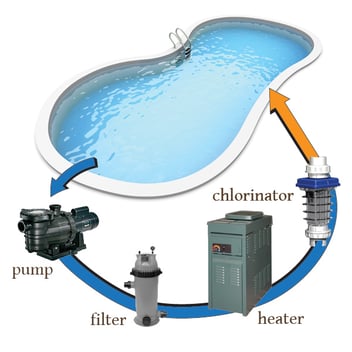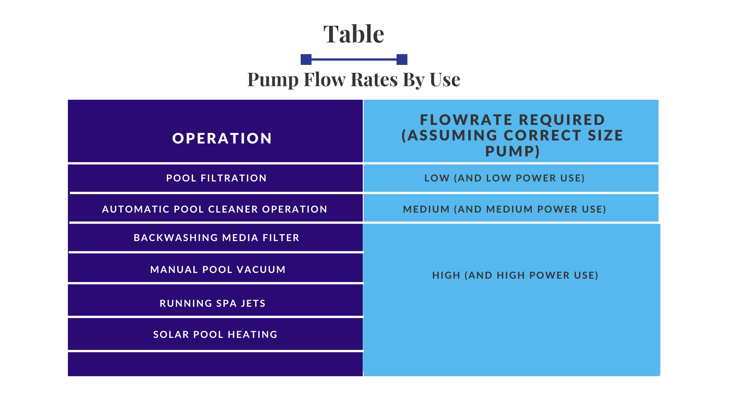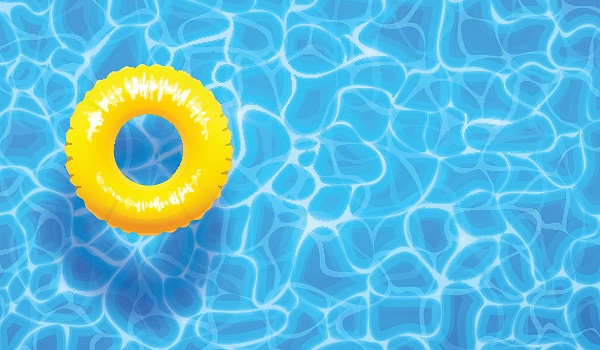What Is The Best Pump For My Pool? Single, Two or Variable Speed?
You've bought your pool direct as a fibreglass pool kit and the swimming is glorious. You knew having a pool would increase your power bill a bit but "not this much". Is there a problem with your pool pump or is it the type of pump you have that is chewing up the electricity? So, what are the different types of pumps and why do you need to think about this before buying your pool direct? If you like saving money and time, read on!
A pool pump that is too small is like half stirring the milk and sugar in your coffee. Urrgh! A pool pump that is too big for you will result in your water being clear however your power bill will unnecessarily go through the roof. Before we talk about the types of pumps you can buy and the pro's and con's, let's talk about the job a pump does for you but keep the technical stuff to a minimum so it's not a snooze fest.
Why do I need a pool pump?
The entire volume of water in your pool needs to be circulated through your filter and chlorinator 1.5 times every day during an Australian summer as a minimum. The diagram below shows the general process.

The Basic Concept of Pool Filtration
Your pool pump needs to be powerful enough to circulate the entire volume of your pool each day and also have enough power so you can manually vacuum your pool, backwash media filters etc.
Got it? Great. Let’s go pump shopping!
The first step to buying pools direct and pump-buying glory is to understand that your pool needs different flow rates depending on the use at the time. Most buyers don’t realise that everyday filtration only needs a low flow rate compared to vacuuming or suction cleaner operation which needs a high flow rate. Too technical? Ok, think of an oven. Setting the temperature to 180 degrees (every day filtration) uses less power than setting the temperature to 220 degrees (vacuuming your pool). If your oven only had one setting at 220 degrees, you are using maximum power every time when you might only need 180 degrees to get your Masterchef level dinner on the table.
The table below shows the different flow rates and power use needed, whether your bought your pool direct or through a full price pool builder.

What are my pool pump options and why should I be interested to know?
Simple - money and time! Why does it always come down to money and time when spending money!
Single Speed Pool Pumps (3 star energy rating) 
As the name suggests, these pumps only run at one speed – full power. They have been in use for decades and work perfectly well. They were invented before power costs became a talking point and pools didn’t have heaters, water features and spa jets.
They range in size between 140 and 500 litres per minute (LPM) depending on your pool size. If your pool needs 300 LPM to properly backwash the filter and run the pool vacuum and only 100 LPM for daily filtering, you will end up running a 300 LPM pump for 8 hours per day. This is the main reason why single speed pool pumps are the second highest power user in your house behind air-conditioning. Or in oven terms, one 220 degree setting for all uses.
Many people tend to buy the smallest pool pump they can get away with to keep the power bills down. With an undersized pump, when your pool is being used constantly in summer, you will need to run the pump longer to keep your water clear and sanitised. Not only will this wear the pump out faster, any money saved buying the pool pump will disappear with higher power bills. For an average 8m long pool, bank on your single speed pool pump costing you around $800 per year to run.
Single speed pool pumps are the cheapest to buy initially. However, they are often the most expensive when you add in power costs over a year or two. If a single speed pool pump suits your budget, go for it, however choose a quality Australian made brand like Astral. A cheap single speed pump ($500 to $800) will be noisy and need to be replaced earlier than a quality pump designed for our brutal summer conditions ($800 to $1,300). A good way to gauge quality is to compare the length of warranty being offered by the manufacturer and how loud (decibels) the pump is when running.
Two Speed Pool Pumps (4 star energy rating) 
As we now know, pool pumps do not need to operate at their maximum LPM rate to maintain a healthy and sanitised fibreglass pool. Filtering can be done at 10-15% of your pumps flow rate. Two speed pumps solve this problem. They have a low speed setting for daily circulation and filtering and high speed setting for running a manual vacuum or backwashing a media filter etc.
While more energy efficient than their single speed friends, the two speeds are fixed so it is important to get the right pool pump for your pool. If the low speed setting is too low, you’ll need to run it for longer which wipes out the power savings. A two speed pump will cost around $200 to $300 more than an equivalent single speed pump. Two speed pumps were popular initially however with the invention of variable speed pumps, they are fading into the shadows as an item on buyers shopping lists.
Variable Speed Pool Pumps (9 star energy rating) 
Put simply, a variable speed pool pump allows you to have multiple settings (usually low, medium and high) that you can program to suit your exact needs. Backwashing the media filter needs a quick push button change to the high speed setting. Job done, select “low” speed for daily pool filtering. If you have a water feature or spa jets, the medium power setting will be ideal. As pool filtering is going to be the most frequent use of your pool pump, the energy savings on low speed are considerable (up to 85%). You are basically idling the pool pump with short bursts of medium and high power.
What does this mean for your bank account? Compared to $800 per annum in power costs for a single speed pump, a variable speed pump will cost you around $200 per year. The $600 a year you save soon offsets the initial higher purchase price. There are added bonuses. Your pool filter is more efficient at removing particulates and nasties from your water when passing through at a lower water pressure. Also, as you pump isn't working as hard, a variable speed pump tends to last longer before needing replacing.
The new generation of variable speed pool pumps can barely be heard when on the low speed setting so you'll be on the neighbours Christmas card list now! A quality variable speed pump should have at least an 8 star energy efficiency rating, preferably 9 stars. They will cost around $1,700 to $2,000 to buy however the rule of thumb is the additional cost is offset in two years with power saved compared to a single speed pump.
Tip: Have a look over your power company’s website to see if they offer power rebates for energy efficient pumps. Plenty do and it’s a phone call to change companies these days if yours doesn’t. Another resource is www.energy.gov.au/rebates which points you towards rebates your local council might also be offering.
Key Takeaway – If you are thinking of buying a single speed pool pump for the low initial cost, you will spend a lot more in running costs than you save on the purchase. If energy efficiency and lower annual running costs are important to you, a variable speed pump is your best bet if you can afford the higher upfront costs. We often recommend delaying a non-essential accessory to help cover the cost. After a year or so, you will have the spare money from saved running costs to pay for the delayed accessory. Win/Win!
Related Blogs
Installing a pool is a big deal—it’s not just about cooling off on a scorching summer’s day; it’s about creating that ultimate backyard escape where friends and family can make memories for years to....
There’s nothing like stepping into your DIY plunge pool after a long day. You installed it, you love it, and it’s your little slice of paradise. Just like your lawn, your pool isn’t set and forget -....
If your heat pump is running and you’re noticing water at the bottom of the unit or around the unit that you haven’t noticed previously, it is easy to think the worst and assume that your heat pump....
About The Author
My wife and I grew up playing in swimming pools. Our daughters learnt to swim in our backyard fibreglass swimming pool. There is nothing quite like hearing kids splashing about and giggling. As pools do, our pool became a social magnet for friends, family and neighbours which we loved. Helping customers to have their own pool and saving customers thousands on their pool and equipment is the best job in the world.























